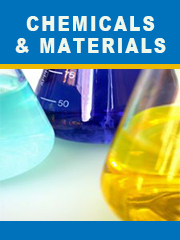Report overview
Methanol fuel is an alternative biofuel for internal combustion and other engines, either in combination with gasoline or independently. Methanol (CH3OH) is less expensive to produce sustainably than ethanol fuel, although it produces more toxic effects than ethanol and has lower energy density than gasoline. Methanol is safer for the environment than gasoline, is an anti-freeze, keeps the engine clean, has a higher flashpoint in case of fire, and is the equivalent of super high-octane gasoline in terms of the resulting horsepower. It can readily be used in most modern engines with a simple software setting tweak and occasionally a change in a cheap fuel seal or line. To prevent vapor lock in any possible circumstances due to being a simple, pure fuel, a small percentage of other fuel or certain additives can be included. Methanol (a methyl group linked to a hydroxyl group) may be made from hydrocarbon or renewable resources, in particular natural gas and biomass respectively. It can also be synthesized from CO2 (carbon dioxide) and hydrogen. Methanol fuel is currently used by racing cars in many countries but has not seen widespread use otherwise.
This report aims to provide a comprehensive presentation of the global market for Methanol Automotive Fuel, with both quantitative and qualitative analysis, to help readers develop business/growth strategies, assess the market competitive situation, analyze their position in the current marketplace, and make informed business decisions regarding Methanol Automotive Fuel. This report contains market size and forecasts of Methanol Automotive Fuel in global, including the following market information:
Global Methanol Automotive Fuel Market Revenue, 2018-2023, 2024-2029, ($ millions)
Global Methanol Automotive Fuel Market Sales, 2018-2023, 2024-2029, (K Tons)
Global top five Methanol Automotive Fuel companies in 2022 (%)
The global Methanol Automotive Fuel market was valued at US$ million in 2022 and is projected to reach US$ million by 2029, at a CAGR of % during the forecast period. The influence of COVID-19 and the Russia-Ukraine War were considered while estimating market sizes.
The U.S. Market is Estimated at $ Million in 2022, While China is Forecast to Reach $ Million.
Brown Methanol Segment to Reach $ Million by 2029, with a % CAGR in next six years.
The global key manufacturers of Methanol Automotive Fuel include Methanex Corporation, VP Racing Fuels, Inc., Exxon Mobil Corporation, Blue Fuel Energy and Chemiphase, etc. in 2022, the global top five players have a share approximately % in terms of revenue.
We surveyed the Methanol Automotive Fuel manufacturers, suppliers, distributors and industry experts on this industry, involving the sales, revenue, demand, price change, product type, recent development and plan, industry trends, drivers, challenges, obstacles, and potential risks.
Total Market by Segment:
Global Methanol Automotive Fuel Market, by Type, 2018-2023, 2024-2029 ($ Millions) & (K Tons)
Global Methanol Automotive Fuel Market Segment Percentages, by Type, 2022 (%)
Brown Methanol
Grey Methanol
Blue Methanol
Green Methanol
Global Methanol Automotive Fuel Market, by Application, 2018-2023, 2024-2029 ($ Millions) & (K Tons)
Global Methanol Automotive Fuel Market Segment Percentages, by Application, 2022 (%)
Conventional Car
Race Car
Global Methanol Automotive Fuel Market, By Region and Country, 2018-2023, 2024-2029 ($ Millions) & (K Tons)
Global Methanol Automotive Fuel Market Segment Percentages, By Region and Country, 2022 (%)
North America
US
Canada
Mexico
Europe
Germany
France
U.K.
Italy
Russia
Nordic Countries
Benelux
Rest of Europe
Asia
China
Japan
South Korea
Southeast Asia
India
Rest of Asia
South America
Brazil
Argentina
Rest of South America
Middle East & Africa
Turkey
Israel
Saudi Arabia
UAE
Rest of Middle East & Africa
Competitor Analysis
The report also provides analysis of leading market participants including:
Key companies Methanol Automotive Fuel revenues in global market, 2018-2023 (Estimated), ($ millions)
Key companies Methanol Automotive Fuel revenues share in global market, 2022 (%)
Key companies Methanol Automotive Fuel sales in global market, 2018-2023 (Estimated), (K Tons)
Key companies Methanol Automotive Fuel sales share in global market, 2022 (%)
Further, the report presents profiles of competitors in the market, key players include:
Methanex Corporation
VP Racing Fuels, Inc.
Exxon Mobil Corporation
Blue Fuel Energy
Chemiphase
Outline of Major Chapters:
Chapter 1: Introduces the definition of Methanol Automotive Fuel, market overview.
Chapter 2: Global Methanol Automotive Fuel market size in revenue and volume.
Chapter 3: Detailed analysis of Methanol Automotive Fuel manufacturers competitive landscape, price, sales and revenue market share, latest development plan, merger, and acquisition information, etc.
Chapter 4: Provides the analysis of various market segments by type, covering the market size and development potential of each market segment, to help readers find the blue ocean market in different market segments.
Chapter 5: Provides the analysis of various market segments by application, covering the market size and development potential of each market segment, to help readers find the blue ocean market in different downstream markets.
Chapter 6: Sales of Methanol Automotive Fuel in regional level and country level. It provides a quantitative analysis of the market size and development potential of each region and its main countries and introduces the market development, future development prospects, market space of each country in the world.
Chapter 7: Provides profiles of key players, introducing the basic situation of the main companies in the market in detail, including product sales, revenue, price, gross margin, product introduction, recent development, etc.
Chapter 8: Global Methanol Automotive Fuel capacity by region & country.
Chapter 9: Introduces the market dynamics, latest developments of the market, the driving factors and restrictive factors of the market, the challenges and risks faced by manufacturers in the industry, and the analysis of relevant policies in the industry.
Chapter 10: Analysis of industrial chain, including the upstream and downstream of the industry.
Chapter 11: The main points and conclusions of the report.
